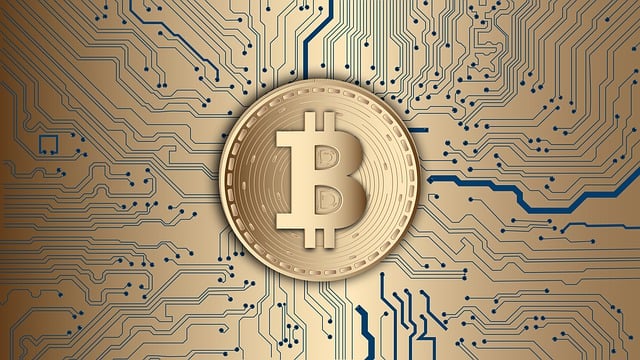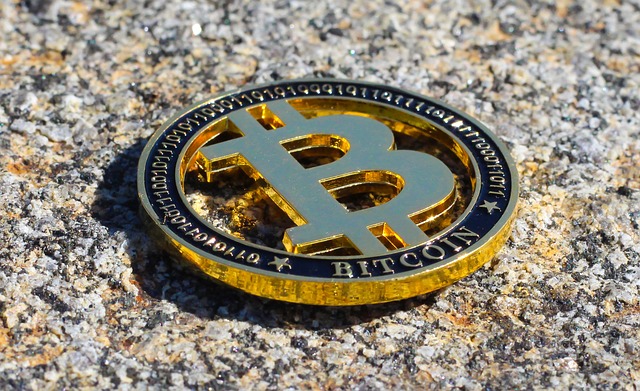Bitcoin ATMs serve as a bridge between traditional finance and cryptocurrencies, offering users a safe, convenient, and private way to buy/sell Bitcoin using cash. Key considerations for successful deployment include high-traffic locations, legal compliance with crypto regulations, robust hardware encryption, and intuitive software integration for seamless transactions. Regular maintenance, updates, monitoring, and physical security are vital to ensure long-term reliability and user trust in the ATM's security and privacy features, including crypto wallet security measures.
“The rise of cryptocurrencies has sparked a new era in financial transactions, and Bitcoin ATMs are at the forefront of this revolution. This comprehensive guide delves into the installation process of these innovative machines, offering an accessible entry point for businesses aiming to facilitate crypto adoption. From site selection and legalities to choosing robust hardware with advanced crypto wallet security features and designing user-friendly interfaces, each step ensures a seamless experience. We explore post-installation care, maintenance, and monitoring strategies to guarantee longevity.”
- Understanding Bitcoin ATMs and Their Role in Crypto Adoption
- Planning for Installation: Site Selection and Legal Considerations
- Choosing the Right Hardware: Security Features of Bitcoin ATMs
- Software Integration and User Interface Design for Seamless Experience
- Maintenance, Monitoring, and Ensuring Longevity: Post-Installation Care
Understanding Bitcoin ATMs and Their Role in Crypto Adoption

Bitcoin ATMs, also known as Bitcoin cash points, are physical machines that allow users to buy and sell cryptocurrencies, including Bitcoin, using cash. They play a pivotal role in bridging the gap between traditional banking and the world of digital currencies. These ATMs have gained significant popularity since their inception, offering a convenient and accessible way for folks to enter the crypto market.
One of the key aspects that make Bitcoin ATMs attractive is their focus on security and privacy, mirroring the core principles of cryptocurrencies. They incorporate robust crypto wallet security features, ensuring users’ funds are protected through advanced encryption and secure transactions. This adds an extra layer of confidence for individuals new to crypto, as they can easily access and manage their digital assets while maintaining a certain level of anonymity.
Planning for Installation: Site Selection and Legal Considerations

When planning to install a Bitcoin ATM, one of the critical initial steps is site selection. The location should ideally be in a high-traffic area, such as a bustling shopping center or business district, where potential users are likely to pass by and show interest. Accessibility and visibility are key; choosing a spot near entrances, exits, or popular hangouts can significantly increase foot traffic and exposure. Moreover, consider the demographic of the nearby community, as this will influence the ATM’s popularity and usage patterns.
Legal considerations cannot be overlooked during the installation process. Different regions have varying regulations regarding cryptocurrency transactions and ATMs. Owners must familiarize themselves with local laws and obtain necessary permits to ensure compliance with financial and security standards, including crypto wallet security features. This step involves understanding tax implications, anti-money laundering (AML) rules, and customer privacy requirements, all of which are essential for a smooth and legal installation process.
Choosing the Right Hardware: Security Features of Bitcoin ATMs

When installing a Bitcoin ATM, one of the most crucial considerations is selecting the appropriate hardware. This includes choosing robust and secure crypto wallet security features that protect against potential cyber threats. The machine should be equipped with advanced encryption technology to safeguard users’ private keys and transactions. Additionally, biometric authentication methods like fingerprint or facial recognition add another layer of protection, ensuring only authorized individuals can access the ATM and conduct transactions.
The hardware also plays a vital role in maintaining the overall security of Bitcoin ATMs. It must be designed to withstand potential physical attacks and environmental hazards, such as extreme temperatures or power surges. Regular software updates are essential to patch vulnerabilities and keep up with evolving security standards in the crypto space. These measures collectively contribute to building trust among users, assuring them that their Bitcoin transactions are secure and private.
Software Integration and User Interface Design for Seamless Experience

The installation process of Bitcoin ATMs involves seamless software integration to ensure a smooth and secure user experience. The first step is connecting the physical machine to a reliable and secure network, allowing for real-time crypto transactions. Advanced software platforms are then integrated, enabling users to interact with the ATM using an intuitive interface. This design focuses on simplicity and security, mirroring the latest trends in crypto wallet security features.
User interface (UI) designers play a crucial role in making these interactions accessible. Clean layouts, clear instructions, and secure input fields enhance user confidence during transactions. The UI should also support various languages to cater to diverse customer bases. By prioritizing both functionality and aesthetics, Bitcoin ATM software integration ensures users can navigate the process effortlessly while benefiting from robust crypto wallet security features.
Maintenance, Monitoring, and Ensuring Longevity: Post-Installation Care

After a Bitcoin ATM is installed, proper maintenance and monitoring become crucial for ensuring its longevity and optimal performance. Regular software updates are essential to keep up with security patches and new features in the crypto wallet security domain. It’s vital to have a robust system in place for remotely monitoring the machine’s operational status, transaction logs, and any potential errors or discrepancies. This proactive approach helps in swiftly identifying and resolving issues before they escalate.
Additionally, physical security measures should be implemented to safeguard the ATM from theft or vandalism. This includes secure installation, surveillance systems, and regular security audits. Regular maintenance checks, including cleaning and hardware inspections, are also necessary to maintain the ATM’s functionality and hygiene. By prioritizing these post-installation care practices, Bitcoin ATM operators can ensure their machines remain reliable, secure, and accessible for users over the long term.
Bitcoin ATMs are revolutionizing access to cryptocurrency, serving as vital touchpoints for crypto adoption. By carefully planning installations, selecting robust hardware with advanced security features like those found in top-tier crypto wallets, and prioritizing user-friendly interfaces, we can ensure these machines provide a secure and seamless experience for users. Ongoing maintenance and monitoring are key to longevity, allowing operators to stay ahead of potential issues and keep up with evolving technology. Embracing Bitcoin ATMs as a community is a step towards a more inclusive and accessible digital economy.
